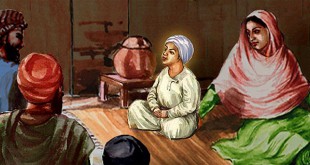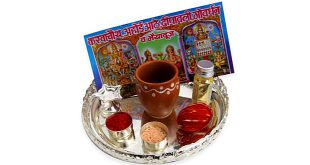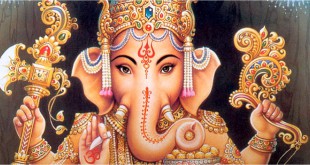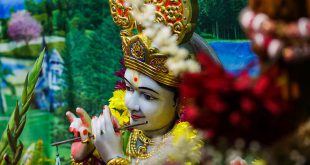 Navratri is celebrated to worship the goddess Durga. She is the embodiment of Devi, or the supreme goddess. This form of the goddess has nine aspects. Navratri therefore is dedicated to the worship of these aspects. Each form or aspect of the goddess has its own day dedicated to it.
Navratri is celebrated to worship the goddess Durga. She is the embodiment of Devi, or the supreme goddess. This form of the goddess has nine aspects. Navratri therefore is dedicated to the worship of these aspects. Each form or aspect of the goddess has its own day dedicated to it.
The Navratri celebrations are devoted to the worship of the Eternal mother, which has its origins in the Vedas. Durga is also considered to be a combination of the Trinity of goddesses. They are Saraswati, Parvati, and Lakshmi. During Navratri, these three main goddesses are worshipped as well. The central theme of Navratri though is the triumph of good over evil.
Navratri lasts for nine whole days. However, each day has its own special significance and is celebrated separately. Along with the nine forms of Durga, obeisance is paid to the Trinity of goddesses as well.
1st — 3rd days: The first three days are dedicated solely to the worship of the goddess Durga. During this period, her energy and power are worshipped. Each day is dedicated to a different manifestation of Durga. On the first day, Kumari is worshipped, which signifies the girl child. The second day is dedicated to Parvati, who is the embodiment of a young woman. On the third day, Kali is worshipped. This form represents the woman who has reached maturity.
On the first day of Navratri, barley seeds are planted in a small bed of mud. This mud bed is kept in the pooja room. By the tenth day, each seed has sprouted into a shoot which is between three and five inches long. After the pooja performed on the tenth day, the shoots are plucked and given to the attendees. They are said to be a blessing from God.
4th — 6th days: These three days are devoted to the worship of Lakshmi, the goddess of prosperity and peace. Although these days are dedicated to Lakshmi, the goddess Saraswati is invoked on the fifth day. This day is referred to as Lalita Panchami. On this day, all the books and other literature are gathered in one place. Then, a ‘diya’ or lamp is lit in front of them to call upon the goddess Saraswati.
7th — 8th days: The seventh day is dedicated to worshipping Saraswati, the goddess of art and knowledge. Prayers are offered to her, seeking spiritual knowledge. The knowledge of the spiritual world is said to free us from our earthly bonds. This, in turn, will bring us closer to God.
On the eight day, a ‘yagna’ is performed. This comprises of a sacrifice, which is offered to the sacred fire. The sacrifice honours the goddess Durga as well as bids her farewell. The sacrifice or offering is made out of clarified butter (ghee), rice pudding (kheer), and sesame seeds.
9th day: The ninth day is the culmination of the entire Navratri celebrations. This day is referred to as ‘Mahanavami’. On this day, a Kanya pooja is performed. Nine young girls, who have not yet attained puberty are worshipped during this pooja. Each one of them symbolises one of the nine forms of goddess Durga. Each girls feet are washed, as a mark of respect for the goddess. At the end of the pooja, each girl is given a set of new clothes as a gift from the devotees.
 Kids Portal For Parents India Kids Network
Kids Portal For Parents India Kids Network






